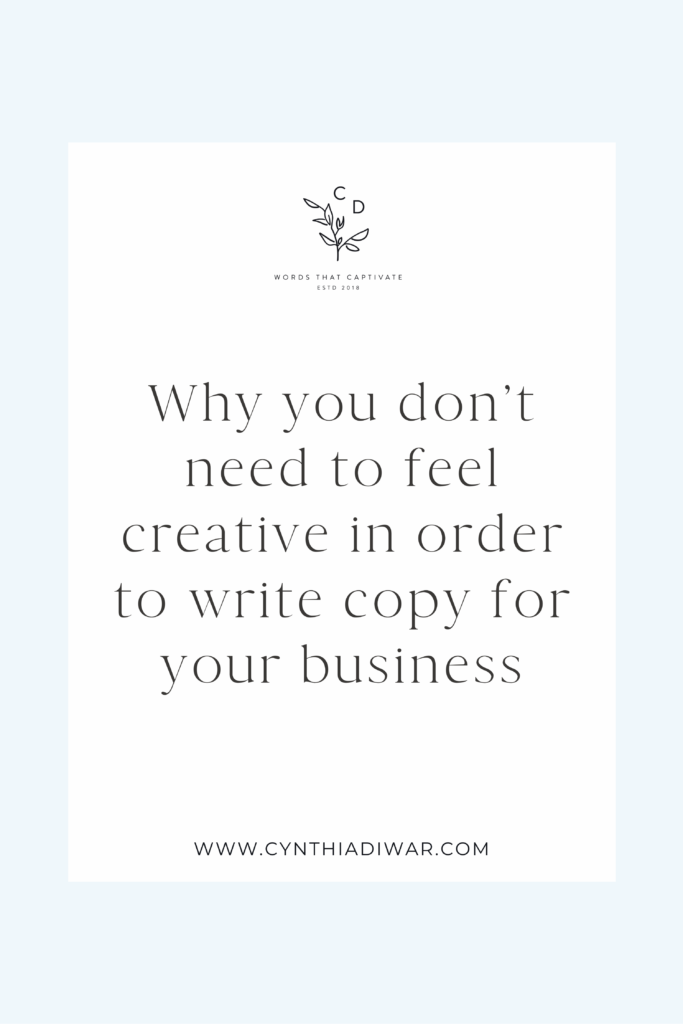I know how it feels to sit and stare at a blank Google Doc, wasting hours without typing a single word and stumped as to what to say.
I catch myself overthinking my writing on the regular. Sometimes instead of actually writing, I end up spending all my time thinking about what I want to write or trying to plan out what I want to write–NOT helpful on content batch days!
Raise your hand if you’ve ever thought:
- I never feel “creative”
- I’m not a good writer
- I don’t have time to write
- I’ve tried batching my content, but I feel like the quality is not that great or it’s taking me FOREVER to write the simplest caption or blog post
Guess what? Copywriting is not about using perfect, flowery language to communicate to your audience. It’s not about crafting unique and creative sentences and stories (although those are great too!). Copywriting is more about writing what your audience wants to read, and adapting to their language and their perspectives.
It may sound counterintuitive to use limitations to help you write effective copy that truly communicates who you are and how you can bring value to others’ lives. However, I’ve identified three tried and true types of “constraints” that you can use to produce content even when you’re not feeling creative or full of ideas.

Topic
The sky’s the limit when it comes to selecting content topics, but you always need to bring that topic back to your “big promise”, which is whatever it is that you provide to your audience that’s valuable.
If you’re struggling to come up with content topics, try starting with your “big promise” and looking at different angles or ways of talking about it, such as through events, personal experiences, analogies, etc.
Time
Set a timer–10 minutes, 20 minutes, 30 minutes, your choice–and write for the entire length of time, even when the words don’t come to you. This is similar to stream of consciousness writing. If you get stumped on what to write, don’t just sit there thinking about it. Keep those fingers typing or that pen moving! Try literally writing “I don’t know what to put here” and just keep going–you can clean it up later.
Template
Writing templates are great for saving time and getting your ideas on the page. You can create a template of your own, or try this classic copywriting formula that aims to captivate readers quickly and move them to take action:
- Attention
Open by making a bold statement, asking a question, sharing a story or surprising statistic, etc.
- Interest
Go deeper–why should your reader care about what you said to open the piece? Why does it matter to them? Can you open their eyes to something they may haven’t thought about before?
- Desire
Position your offer as a solution to what your audience really wants.
- Action
Give your reader something specific to do. Note that it doesn’t always have to a call to the sale. It can simply be a call to comment, send you a message, etc. These smaller calls to action train your audience to engage with your content and eventually take a bigger action (buying from you or applying to work with you) once they like, know, and trust you.
—
Ready to get words on the page? Sign up for my email list for more tips and tricks!

Comments +